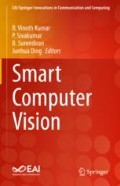Abstract
Hyperspectral remote sensing has been a prime focus of geospatial technology for the past three decades. In the present work, HSI classification was done by considering open set adaptation and Generative Adversarial Networks (GAN). The test data may have additional labels than train dataset, which leads to open set domain adaptation. Sometimes, it is hard to acquire the useful information straightforwardly from HSI information because of the volume of data. Dimension reduction method such as dynamic mode decomposition (DMD) is found to be very effective for reducing the redundant features. Then as an extension to the work, also explored is a novel Chebyshev polynomial-based dimensionality reduction technique for HSI classification to check whether is it possible to reduce the dimension of each dataset further with comparable classification accuracy. The performances are analyzed in terms of classification accuracies, time for computation, and peak signal to noise ratio (PSNR).
Access this chapter
Tax calculation will be finalised at checkout
Purchases are for personal use only
References
Goetz, A. F., Vane, G., Solomon, J. E., & Rock, B. N. (1985). Imaging spectrometry for earth remote sensing. Science, 228(4704), 1147–1153.
Pau, P. B., & Gall, J. (2017). Open set domain adaptation. Proceedings of the IEEE International Conference on Computer Vision.
Hoffman, J., Rodner, E., Donahue, J., Kulis, B., & Saenko, K. (2014). Asymmetric and category invariant feature transformations for domain adaptation. International Journal of Computer Vision, 109(1–2), 28–41.
Gopalan, R., Li, R., & Chellappa, R. (2011). Domain adaptation for object recognition: An unsupervised approach. In IEEE Conference on Computer Vision and Pattern Recognition (pp. 999–1006).
Saenko, K., Kulis, B., Fritz, M., & Darrell, T. (2010). Adapting visual category models to new domains. In IEEE European conference on computer vision (pp. 213–226).
Chopra, S., Balakrishnan, S., & Gopalan, R. (2013). DLID: Deep learning for domain adaptation by interpolating between domains. In ICML workshop on challenges in representation learning.
Gong, B., Shi, Y., Sha, F., & Grauman, K. (2012). Geodesic flow kernel for unsupervised do-main adaptation. In IEEE Conference on Computer Vision and Pattern Recognition, 2066–2073.
Saito, K., Yamamoto, S., Ushiku, Y., & Harada, T. (2018). Open set domain adaptation by back propagation, ArXiv, 1804.10427v2[cs.CV].
Fong, M. (2007). Dimension reduction on hyperspectral images. University of California.
Megha, P., Sowmya, V., & Soman, K. P. (2018). Effect of dynamic mode decomposition based dimension reduction technique on hyperspectral image classification. In Computational signal processing and analysis (pp. 89–99). Springer.
Krishnendu, C. S., Sowmya, V., & Soman, K. P. (2021). Impact of dimension reduced spectral features on open set domain adaptation for hyperspectral image classification. In Evolution in computational intelligence (pp. 737–746). Springer.
Aldhaher, S., Luk, P. C. K., & Whidborne, J. F. (2014). Electronic tuning of misaligned coils in wireless power transfer systems. IEEE Transactions on Power Electronics, 29(11), 5975–5982.
Lee, S.-P., Cho, B.-L., Ha, J.-S., & Kim, Y.-S. (2015). Target angle estimation of multifunction radar in search mode using digital beamforming technique. Journal of Electromagnetic Waves and Applications, 29(3), 331–342.
Driscoll, T. A., Hale, N., & Trefethen, L. N. (Eds.). (2014). Chebfun guide. Pafnuty Publications.
Gowri, B., Ganga, K. P., & Soman, and D. Govind. (2018). Improved epoch extraction from telephonic speech using Chebfun and zero frequency filtering. Interspeech.
Mohan, N., & Soman, K. P. (2018). Power system frequency and amplitude estimation using variational mode decomposition and chebfun approximation system. In 2018 twenty fourth national conference on communications (NCC). IEEE.
Hyperspectral image dataset available at http://www.ehu.eus/ccwintco/index.php/HyperspectralRemoteSensingScenes
Author information
Authors and Affiliations
Corresponding author
Editor information
Editors and Affiliations
Rights and permissions
Copyright information
© 2023 The Author(s), under exclusive license to Springer Nature Switzerland AG
About this chapter
Cite this chapter
Krishnendu, C.S., Sowmya, V., Soman, K.P. (2023). Deep Learning-Based Open Set Domain Hyperspectral Image Classification Using Dimension-Reduced Spectral Features. In: Kumar, B.V., Sivakumar, P., Surendiran, B., Ding, J. (eds) Smart Computer Vision. EAI/Springer Innovations in Communication and Computing. Springer, Cham. https://doi.org/10.1007/978-3-031-20541-5_13
Download citation
DOI: https://doi.org/10.1007/978-3-031-20541-5_13
Published:
Publisher Name: Springer, Cham
Print ISBN: 978-3-031-20540-8
Online ISBN: 978-3-031-20541-5
eBook Packages: EngineeringEngineering (R0)

